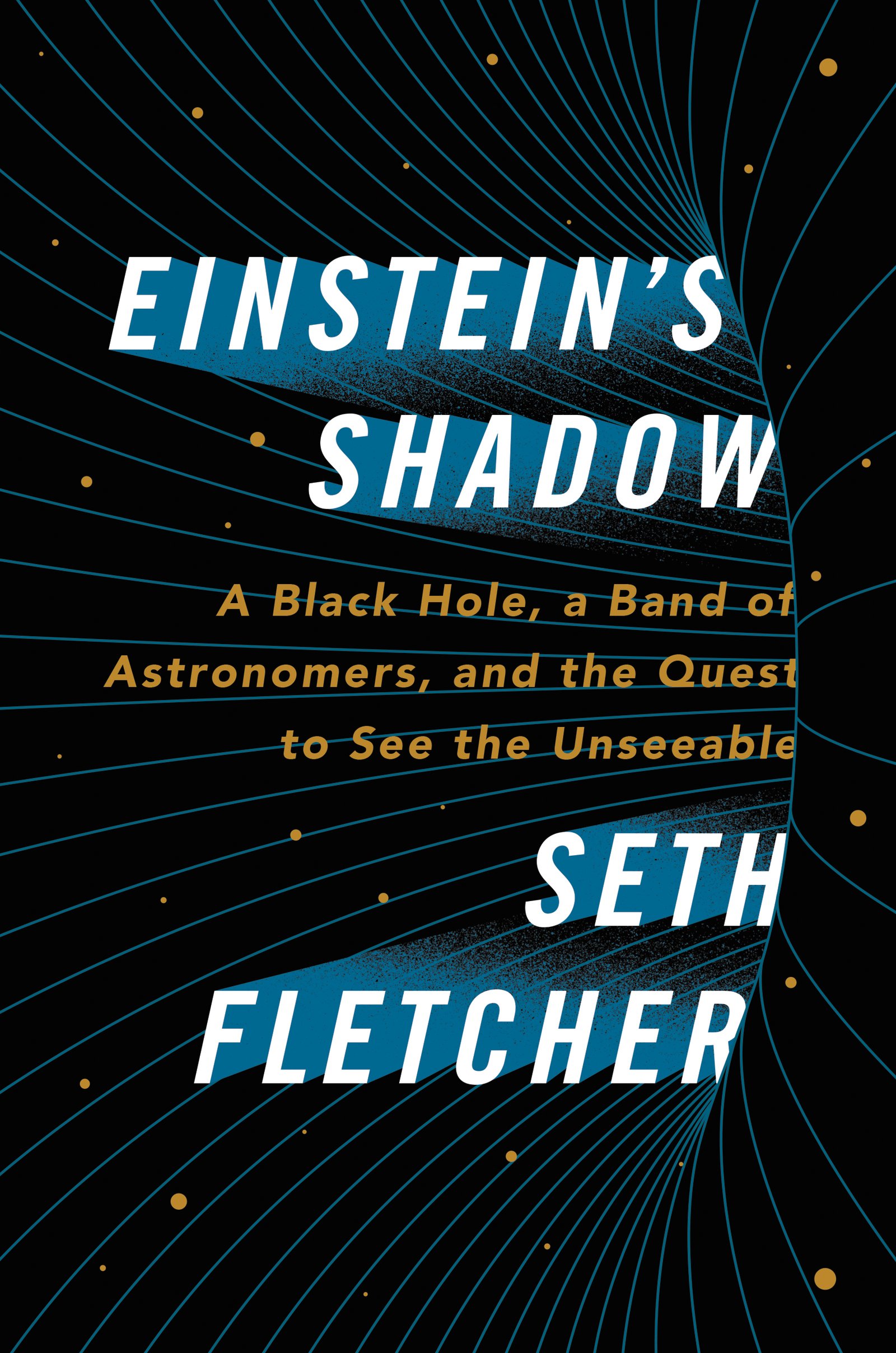Seth Fletcher
Ecco/HarperCollins, October 9, 2018
288 pages
Hardback, $27.00
Emma Garst
What if the speed of light was 25 miles per hour? What if we lived in “Flatland”, a world of two dimensions? What if you fell into a black hole? There is a whole genre of books dedicated to probing these mind-bending ideas about the nature of space and time—books written to bring complex mathematical concepts to eye level in terms of “what ifs.” However, what is harder to find, is the “how do” book. How do we know planets curve space-time? How do we measure the size of the black hole at the center of our galaxy? In fact, how do we even know there is a black hole at the center of our galaxy? Untangling the intricacies of designing experiments, taking measurements, and seeing a signal in the noise is more complicated and messy than a theoretical model. In Einstein’s Shadow, Seth Fletcher manages to weave these threads into a compelling narrative.
Einstein’s Shadow follows Shep Doeleman in his intrepid journey to build an earth-sized telescope to image the black hole at the center of the galaxy. The reader quickly finds out that this does not, in fact, involve building a Death Star-like outer-space contraption. Instead, this massive telescope requires the synchronization of radiotelescopes all over the world to get a view of that black hole from many points at once, creating a virtual telescope with a dish diameter equal to the distance between the observatories.
The undertaking of such a project is not as simple as asking for money and collecting data. Telescopes around the globe must be upgraded with state-of-the-art equipment and never before tested methods of data collection must be written. Time on the telescopes must be coordinated and the weather must cooperate in three to four different locations thousands of miles apart. Massive international consortiums of scientists must be organized and managed—by scientists with no formalized training in organizational management. Fletcher is attuned to the small absurdities that arise in this situation. “The minutes from their discussions convey the good-natured cluelessness of kids trying to start a rock band,” he writes of an early organizational meeting. “‘Perhaps we should keep a list of action items and take turns with writing minutes,’ concludes the first installment.”
Fletcher’s narrative ability shines as he describes the installation of an atomic clock in one of the many telescopes needed for this project. On its face, the process of moving a hulking piece of equipment from the first to the second floor of a telescope base seems so trivial as to not be worth a mention. However, Fletcher heightens the scene to an emotionally charged peak, laying out the nail biting process and the dire consequences of one misstep. From the slow-moving caravan up the side of the mountain to the lifting of the atomic clock by a slew of workers using rappelling harnesses and roping ladders together “as if to cross chasms in the Khumbu icefall” and swinging the atomic clock “Tarzan-style… cable to cable, across the open stairwell,” the reader is thrown in with the scientists, looking on with a bit of terror and a silent prayer. This is one of a thousand steps that must go right to create the earth-sized telescope, and in these moments the reader feels how precarious the scientific endeavor is.
The wonders of the day-to-day, mechanical work of getting a project of this scale off the ground were sometimes overshadowed by the people and politics involved. Fletcher’s focus on Shep casts the astronomer as the necessary hero of the story, the man shepherding a wily and complex idea towards execution—which wouldn’t be a problem if I didn’t find the man so unlikeable. Throughout the book, Shep seems in turn difficult, smug, and paranoid. These character failings are not totally lost on Fletcher, who describes Shep as “tightly coiled and intense”; but the broader view casts Shep as a difficult genius, whose larger than life personality is a necessary quirk of his innate intellect. As a scientist I’ve met enough smart, capable, communicative, and cooperative people that I have little infatuation with this pernicious trope.
Part of the draw of this work is its importance; these scientists are trying to get a look at the structure of our galaxy, and in the process see the inner mechanics of our universe. If that’s not grand, I don’t know what is. By focusing on the nitty gritty work of engineering and organization for this ambitious astronomical project, Fletcher brings a massive undertaking down to earth, in more ways than one.

